Blogpost for Jan 12, 2019
As per usual, we awoke this morning and made our way to our normal haunt for a breakfast of French toast and omelets. Upon finishing breakfast, we first made a quick stop at our hotel, Hamdallah, before beginning our day trip to Saakpuli, a 17th century slave market, 28 miles from Tamale.
On our drive north, we were able to observe the landscape change from grasslands surrounded by trees to more of a desert-like grassland. As we arrived, we were informed that there was no cell service in the town, and the only electricity was supplied by solar panels and used only to light the streets at night.
We began the visit into the village by meeting the chief and announcing our presence. His palace, like many other buildings in the village, was a thatched grass roof with the structure made from clay. He was very nice and made us feel welcome by emphasizing how much he appreciated visitors who come to see the history there.
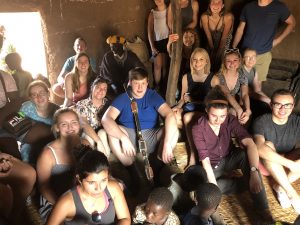
After meeting with the chief, we piled on the bus to drive out to the drinking wells.

These wells were different than those we saw in Salaga. These wells were small and meant only for drinking as opposed to the larger wells used for both bathing and drinking we saw in Salaga. The wells are also of varied designs, and no wells are of the same design.
After the wells, we headed back to the village to visit the tree that slaves were chained to during the days of Slavery. Two groves were prominent on both sides, East and west of the tree, which was used as receptacles for cowries, the main currency for the trade.

We were even able to examine artifacts that an archeologist from the University of Ghana, Legon dug out from under the tree that suggest it was really a slave market, and there was a room close to the tree that collapsed burying all the stuff underneath. There were earthenware — pots for foods, weighing cowries and smoking pipes.
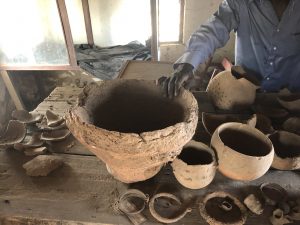
We all were taking pictures but Abdulai was very concerned about the bee hive on the tree and we ended by running away to avoid angry bees that weren’t there.
The entire time we were in the village, we were surrounded by curious children and we made friends with some of them.
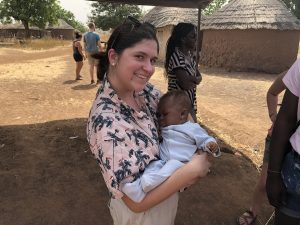
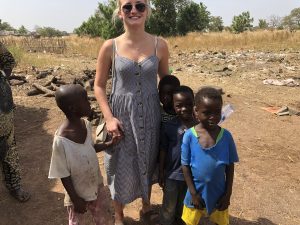
We ended the visit by once again visiting the chief who had kindly put on his traditional garb so we could take a picture.
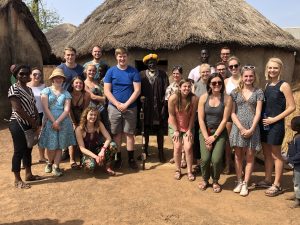
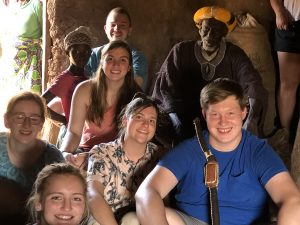
Above is a picture with James holding the staff of the chief, who had installed him as his Naazo, the chefs friend. The title invests James with the friendship with the chief and the only person who can criticize, riducule and make fun of the chief. We also see Emma taking the position of the chief’s wife, for the chief had pointed to her as his wife and asked her to stay. Of course, that was a joke.
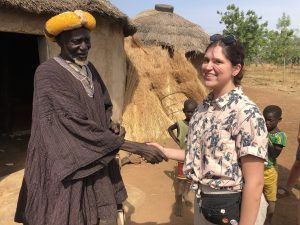
As we got on the bus, we handed out all of our water to the children who then played with and drank the water.
We traveled back to Tamale where we had lunch at our usual spot. At the end of lunch we ran out to buy ice cream from a vender with a cooler connected to his bike as relief from the heat, as today was over 100 degrees. We finally headed back to the hotel to rest for the evening and pass the time as a group.
